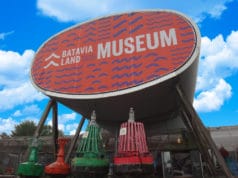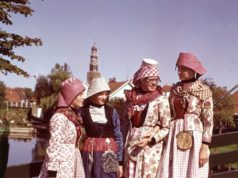Did you know that the Dutch craft of the miller operating windmills and watermills has been added to the UNESCO List of Intangible Cultural Heritage? This is the first Dutch intangible heritage (‘immaterieel erfgoed’ in Dutch) that has been inscribed on this list. Milling is a wonderful craft that is thoroughly interwoven with the Netherlands.
The craft of milling
The craft of the miller involves the knowledge and skills necessary to operate a mill and to keep it in a good state of repair. For example, millers know how to prepare a mill for rotation or milling, how to handle the mill in varying weather conditions, how to position a windmill’s sails to best catch the wind and so on.
Millers play an important role in local communities, not only socially and economically but also culturally. They sell their artisanal products like flour and pancake mix from mill shops. Together with many volunteers in and around the mills, they keep the miller’s craft alive and also create jobs indirectly in related occupations, for example bakers, mill builders and restorers.
Millers are also committed to sharing knowledge about miller’s craft with the general public and organize the annual National Mill Weekend in May. Many mills welcome groups of schoolchildren and tourists to their mill. Internships are available for vocational education students, which helps in the recruitment of new apprentices for the volunteer miller training course.
Preservation for the future
Since the 19th century many windmills and watermills have come to a standstill. Technical and economic changes led to windmills and watermills being abandoned. With the standstill, the knowledge of working with mills threatened to die out. Today around 50 professional millers and hundreds of volunteer millers throughout the Netherlands are working hard to preserve the approximately 1,200 remaining windmill and watermills.
Training course for millers
The Dutch Guild of Volunteer Millers offers training courses for anyone interested in the miller’s craft. Aspiring millers are required to spend a minimum of 150 hours doing practical work at different types of mills, in every season of the year. Since the foundation of the guild in 1972, almost 2,000 volunteers have obtained their miller’s qualification.
UNESCO aims to demonstrate the diversity of cultural heritage
UNESCO established its List of Intangible Cultural Heritage (ICH) with the aim of ensuring better protection of important intangible cultural heritages worldwide and the awareness of their significance. The list includes intangible cultural heritage elements that help demonstrate the diversity of cultural heritage and raise awareness of its importance.
There is also a List of Intangible Cultural Heritage in Need of Urgent Safeguarding. This list contains elements that require urgent measures to keep them alive like Mongolian calligraphy, the Nan Pa’ch ceremony in Guatemala and the rite of the Kalyady Tsars in Belarus.
UNESCO Convention in South Korea
The craft of the miller operating windmills and watermills is inscribed on the UNESCO List of the Intangible Cultural Heritage of Humanity. That was announced today during the meeting of the Intergovernmental Committee for the Safeguarding of the Intangible Cultural Heritage on Jeju Island in South Korea. Dutch millers have traveled to South Korea to receive the good news.
Other new inscriptions on the UNESCO List of Intangible Cultural Heritage
Other new elements inscribed on the Representative List of the Intangible Cultural Heritage of Humanity include the art of Bài Chòi in Vietnam, Basel Carnival in Switzerland and the Sega Tambour of Mauritius’ Rodrigues Island.
Dutch millers guilds and association
These guilds offer support to millers to keep their knowledge and skills up to date by organising excursions, evening theory classes, conferences and network meetings. The Guild of Traditional Flourmill Millers conducts annual grain inspections and issues recipe booklets and nutritional value labels.
Gilde van Vrijwillige Molenaars (Guild of Volunteer Millers): almost 2,500 volunteer millers, chapters in each province of the Netherlands
Gild Fryske Mounders (Guild of Frisian Millers): 300 members including 200 active volunteer millers
Ambachtelijk Korenmolenaars Gilde (Guild of Traditional Flourmill Millers): around 40 professional millers
Vereniging De Hollandsche Molen (Dutch Mill Society): 5,000 members and benificiaries have the broader aim of managing and safeguarding windmills and watermills



